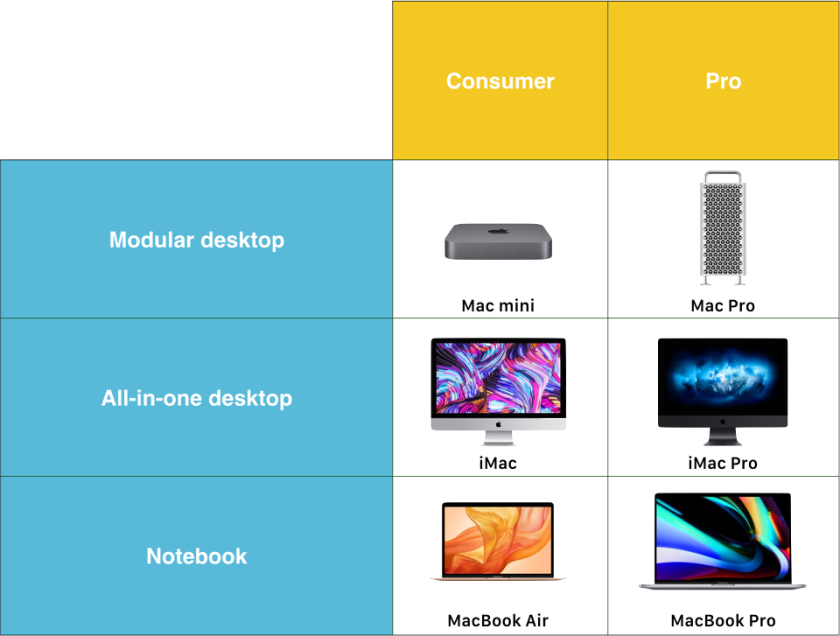On the occasion of recent rumblings concerning the iMac getting a potential refresh very soon, I looked into the current Mac line-up as a whole. Turns out, Apple has a pretty decent and clear Mac offering nowadays.
The Mac product strategy anno 1998
Take a look at the video below of Steve Jobs introducing the very first iMac in 1998:
He starts off by discussing the Mac product strategy from that time, using a simple quadrant. Back then, there were two main product categories: desktops and portables. Jobs also identified their target audiences: both consumers and professionals. This resulted in a line-up of 4 Macs.
The Mac line-up anno 2020
If you look at today's Mac offering, the products can be organized in a similar way. Except now Apple offers Macs in three product categories. Mac desktop computers can be divided in two subcategories (see image below): all-in-one desktops and modular desktop systems in which the computer itself is separated from it's peripherals (keyboard, pointing device and display).

Cool thing is that, except for the iMacs, all products are in good shape. The list below shows an overview of recent product refreshes:
- Mac mini: March 2020
- Mac Pro: December 2019
- MacBook Air: March 2020
- MacBook Pro: 13 inch: May 2020 / 16 inch: November 2019
The iMac had its latest refresh in March 2019, while the iMac Pro was never updated since its release in December 2017. New iMacs would really make the current Mac offering complete. I would also welcome a new industrial design (the current design dates back to October 2014). Let's see what Apple will announce next week during WWDC...
Compare this to the situation we were in a couple of years ago:
- There was no real viable offering for Apple notebooks: underpowered and pricey 12 inch MacBook + a horrible keyboard on all the MacBooks from the previous generation
- Professionals were begging for a true modular desktop Mac (the "trash can" Mac Pro was unable to fulfill the needs of the most demanding customers